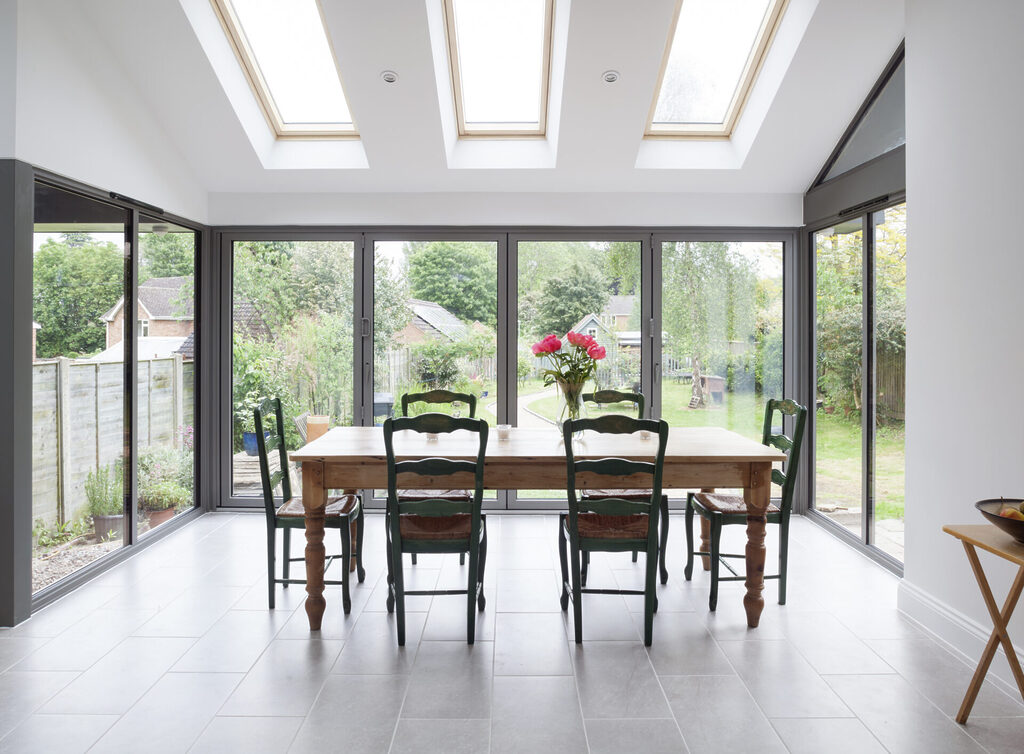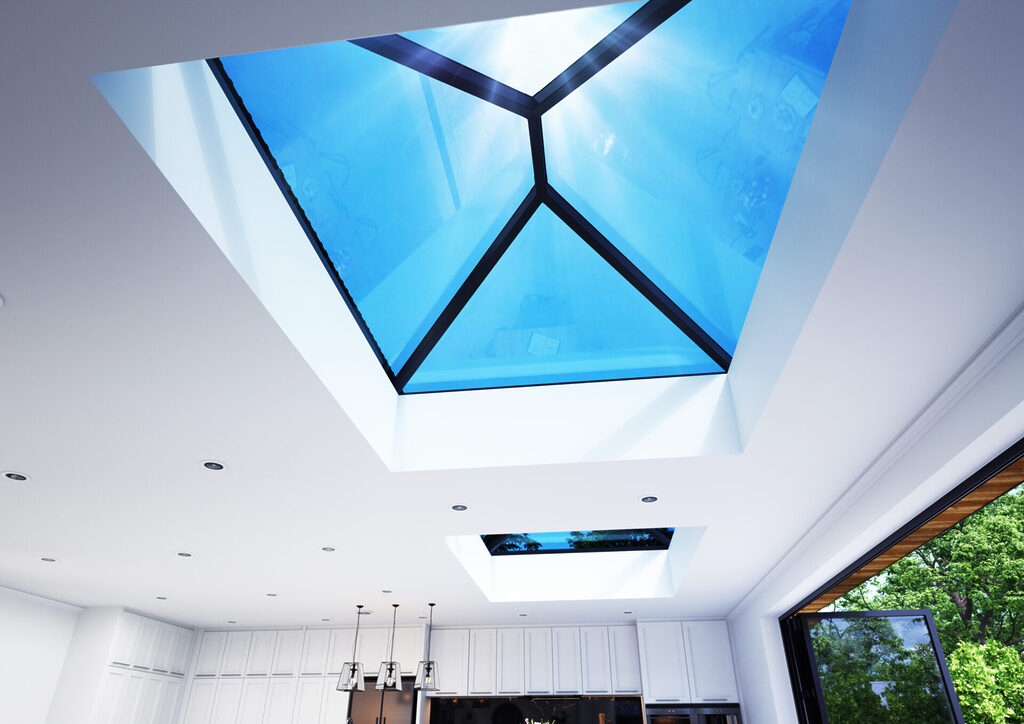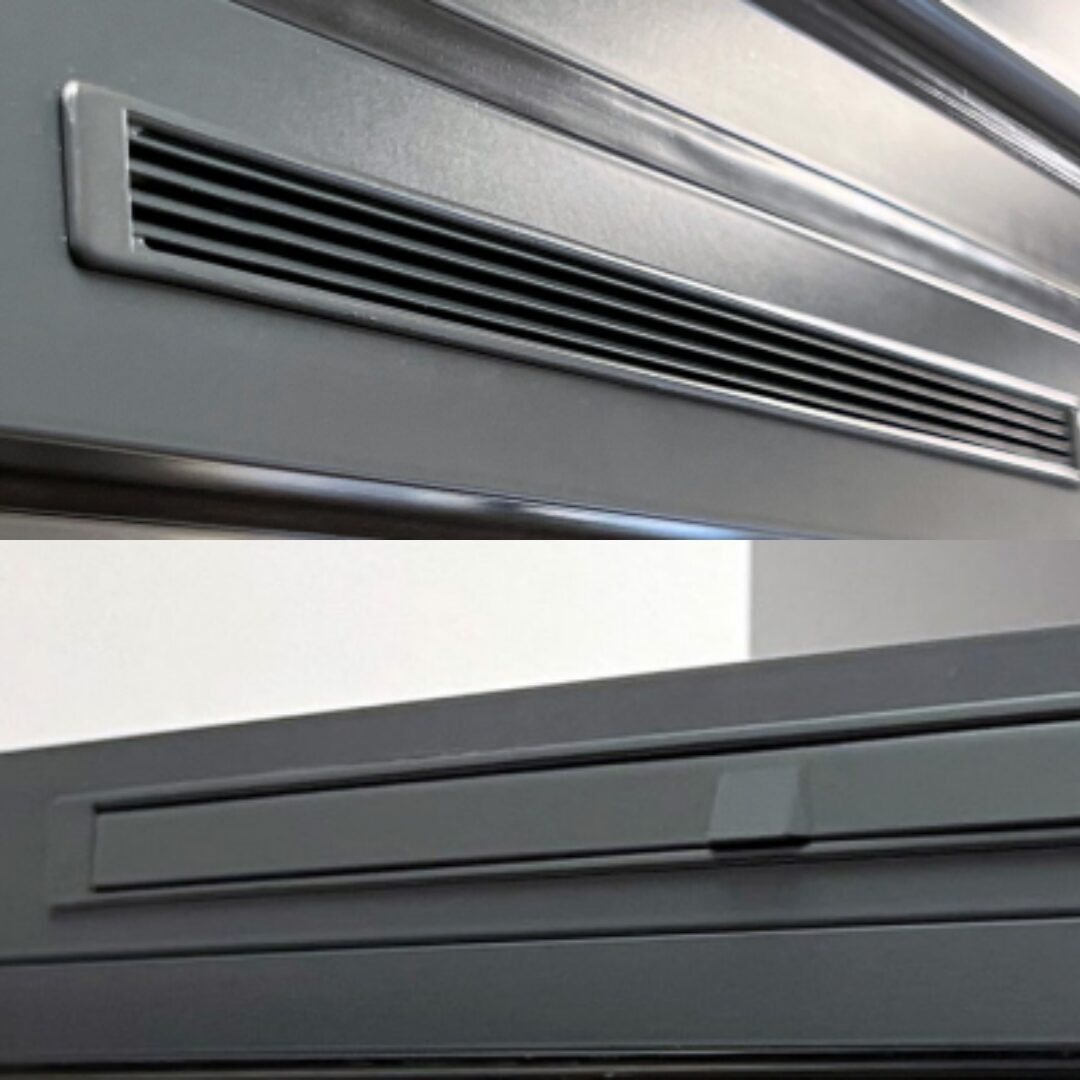Last Updated on 12 May 2025 by Team GFD
What is a trickle vent and do you need them?
Wondering ‘what is a trickle vent?’? It’s a small built-in opening in a window or door frame that allows fresh air to circulate and, in most UK homes, they’re required by building regulations to improve ventilation and reduce condensation.
What’s Included in This Article:
- What a trickle vent is and how it works
- Why it’s required under UK Building Regulations
- The different types of trickle vents available
- Pros and cons of installing trickle vents
- FAQs
(Estimated reading time: 9 minutes)
Introduction
If you’ve recently looked into upgrading your windows or doors, you’ve probably been searching the answer to ‘what is a trickle vent?‘. It might sound technical, but this small feature plays a huge role in the comfort, health, and efficiency of your home. In fact, for most modern installations, it’s now a legal requirement.
So what exactly is a trickle vent, and why do you need one? Whether you’re navigating the latest UK building regulations or just want to understand what those narrow slots above your windows are for, we’ve got you covered.
What Is a Trickle Vent?
A trickle vent is a narrow, controllable opening integrated into the frame of a window or door. It allows small amounts of fresh air to enter a room, even when the main window or door is closed. These vents help maintain indoor air quality, reduce condensation, and keep homes well-ventilated without compromising on security or energy efficiency.
How it works:
- When opened, it allows external air to “trickle” into the room
- Air circulation occurs naturally via pressure differences
- Most have manual sliders to open or close as needed
They’re often located at the top of window or door frames and are especially beneficial in bathrooms, kitchens, and bedrooms—spaces prone to moisture and stale air.

Think of trickle vents as your home’s built-in breathing system—quietly refreshing the air without letting in the cold.
Why Are Trickle Vents Important?
Health & Air Quality
Stagnant air can trap pollutants, allergens, and moisture. Trickle vents help ventilate your home passively, reducing the risk of mould, dampness, and respiratory issues.
Legal Compliance (UK Building Regulations Part F)
Since the 2022 update to Part F of the Building Regulations, background ventilation is mandatory for most new and replacement windows and doors in existing homes. In most cases, trickle vents are the simplest way to comply.
Moisture Control
Condensation on windows isn’t just unsightly—it can damage sills, paintwork, and plaster. Continuous background ventilation provided by trickle vents keeps humidity in check.
Security
Unlike cracking a window open, trickle vents maintain air flow without compromising your home’s security.
Energy Efficiency
Modern trickle vents are thermally broken and pressure-equalised. They prevent draughts while maintaining air circulation, offering a balanced approach to ventilation.
Types of Trickle Vents
Overframe Vents
These are installed in the upper frame section of the window or door. They’re visible but easy to access and operate.
Glazed-In Vents
Built into the glazing bead or sash for a sleeker look. Less common but popular in high-end aluminium or commercial installations.
Sash Head Vents
Often used in tilt and turn windows or sliding sash windows. Discreet and effective.
Choose a vent that matches your frame, design, and performance goals—there’s no one-size-fits-all.
Do You Need a Trickle Vent?
In most cases—yes. If you’re replacing existing windows or doors that had background ventilation, or if the new installation reduces air leakage below acceptable levels, trickle vents are mandatory under Building Regulations.
You may not need them if:
- You have a mechanical ventilation system with heat recovery (MVHR)
- You’re installing windows in non-habitable rooms with alternative airflow
But for most homeowners, trickle vents are the simplest way to meet legal and health standards.
Pros and Cons of Trickle Vents
Pros:
- Improves indoor air quality
- Helps comply with regulations
- Discreet and easy to operate
- No impact on home security
- Reduces condensation and mould

Cons:
- Can affect visual aesthetics
- May allow slight sound transmission from outdoors
- Some older vents feel draughty (not an issue with modern versions)
Understand Trickle Vent with GFD Homes Today
Trickle vents might be small, but they’re an essential feature in modern homes—ensuring legal compliance, better air quality, and long-term comfort. Whether you’re replacing windows or designing a new space, it’s worth factoring them in from the start.
At GFD Homes, we make it easy to choose windows and doors with the right balance of performance and ventilation. Talk to our team about finding a trickle vent solution that suits your home.
It’s what you don’t see that makes your home healthier—and that starts with trickle vents.
📞 Need help or advice? Call us on 01642 309576.
💡 For more expert tips and product insights, don’t forget to check out our GFD Blog.
FAQs about What is a Trickle Vent?
Are trickle vents required in new windows?
Yes, in most cases where background ventilation is required by Building Regulations.
Should trickle vents be open all the time?
They should remain open most of the time, especially in colder months when condensation risk is high.
Can I remove or cover them?
No—this could breach regulations and lead to poor air quality or condensation issues.
Do trickle vents let in noise?
Some sound may enter, but modern vents are designed with noise baffles to minimise disturbance.
More than just doors – explore these must-read articles…
- 15 Durable Window Styles That Balance Affordability and Quality
- Double Doors: Explore French Door Styles, Glazing Options & Entrance Ideas
- Ultion Lock: The High-Security Cylinder That Comes with Every Solidor
- Trade Types of Trickle Vents: looking for trade prices? Visit our trade site, The Trade Village.

